10 brilliant birds to spot in Britain this winter – and where to find them

Britain hosts an array of migrant birds that bring a bit of magic to the darker months. If you’re in the right place, you may spot a flock or two
Snow bunting
The most northerly of songbirds, the snow bunting breeds in the Arctic then heads south for winter, arriving on British coasts from Greenland and Iceland in late September. They are usually found in busy little flocks foraging across beaches, hillsides and clifftops. Their distinctive white wing patches and black wingtips make them easy to identify. Try Cley and Salthouse Marshes in north Norfolk. Birdtour runs day and weekend trips in this area, picking up sightings of cranes and pink-footed geese, too.
Merlin
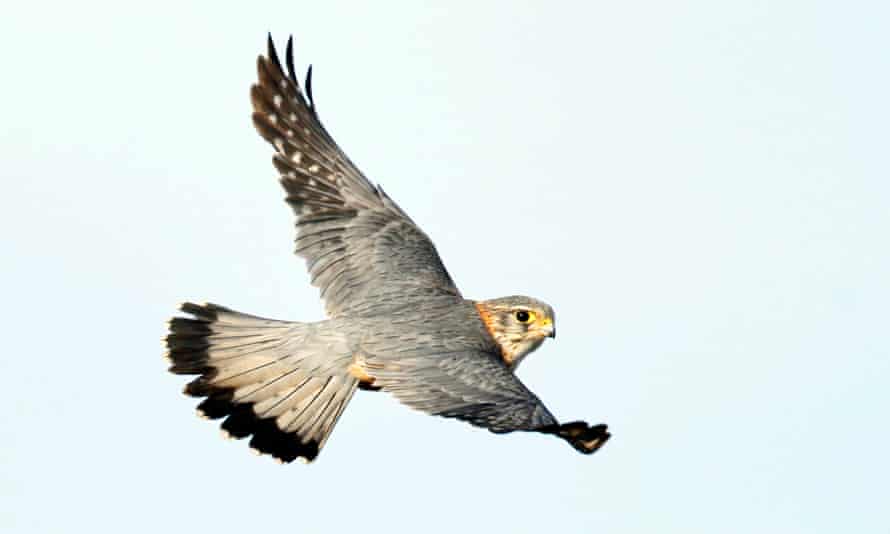
Another resident that becomes conspicuous in winter along the coasts, the merlin is our smallest raptor: barely half the size of its larger cousin the peregrine, but likewise a masterful flyer, catching small birds on the wing. That is why in winter it heads coastwards, seeking the flocks of birds that gather on the shoreline. Resident merlin numbers are boosted in winter by arrivals from Iceland. Spurn Head and the Humber estuary are particularly good places for seeing them. Yorkshire Coast and Nature runs regular birding days in winter that help fund the Spurn bird observatory.
Short-eared owl
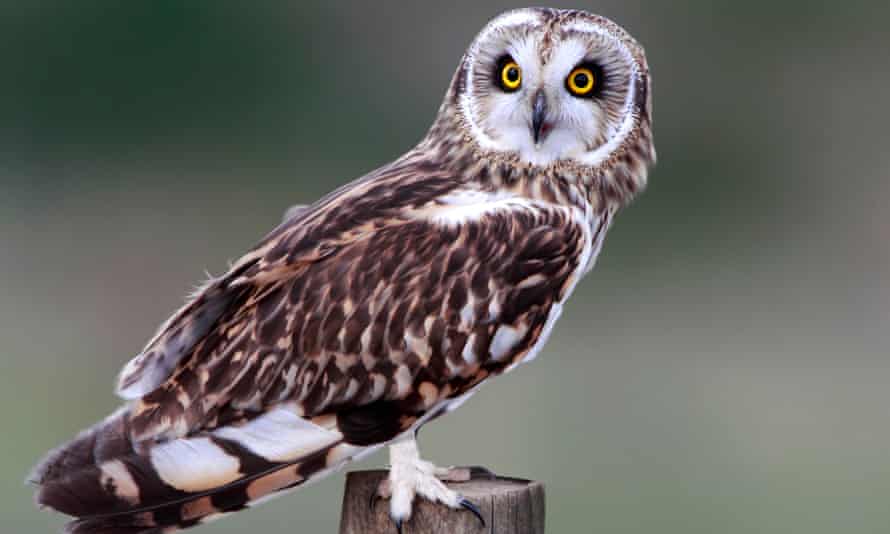
Unlike some of its cousins, this medium-size owl hunts at dusk and in daylight, gliding silently across tussocky hillsides and marshes in search of voles, its pale face dominated by a pair of big yellow eyes. Britain has resident short-ears, but in winter their numbers are boosted by others migrating from Scandinavia and Russia, increasing the chances of a sighting. The best locations are coastal saltmarshes and clifftops along the east coast, such as the RSPB reserves of Bempton Cliffs in East Yorkshire, Minsmere in Suffolk and Nene Washes near Peterborough, but the migrants also move into the Midlands, the south-west of England and the Scottish east coast. Owls often congregate in winter, so the lucky could see more than one. Undisturbed rough pasture is the likeliest location.
Whooper swan
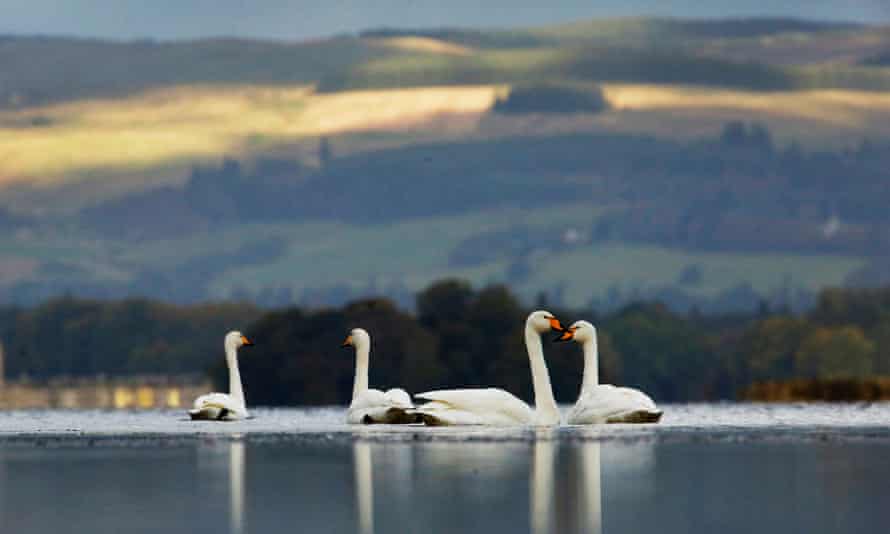
Two species of swan fly to Britain in winter: the whooper from Iceland, and the Bewick’s from Siberia. They both have yellow-and-black bills, but the whooper is much bigger: at up to 15kg, it is one of the heaviest flying birds (only some desert-dwelling bustards get heavier). For this reason they like to be in water. Spot them in the north at reserves such as RSPB Portmore Lough in Northern Ireland or Loch of Spiggie in the Shetlands. Further south, the best spot is Welney Wetland Centre near Wisbech, where up to 7,000 whoopers and 2,000 Bewick’s overwinter.
Fieldfare
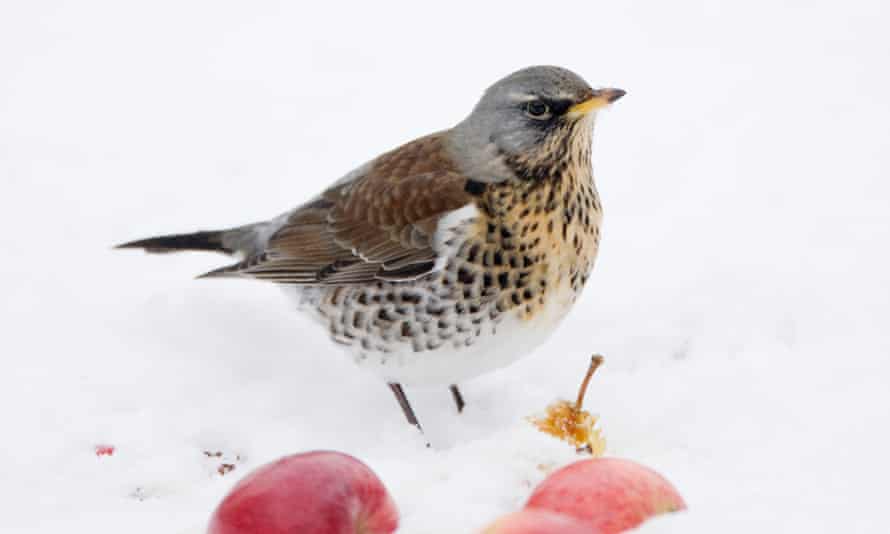
If the waxwing is the dapper dandy of winter birds, the fieldfare is the ragamuffin, an artful dodger patched up from stolen feathers: a slate grey cap, a snowy white rump, and in between a romp of speckled rufous and yellow. Up to a million of them start arriving in October, often mixed with smaller redwings. They roister across hedgerows and treetops, sometimes settling on the ground to feed. Leave any fallen apples on the ground and in a cold spell they may muscle in on the blackbirds’ banquet. Look for them anywhere except the mountains in the far north of Scotland. Check your local wildlife trust.
Siskin
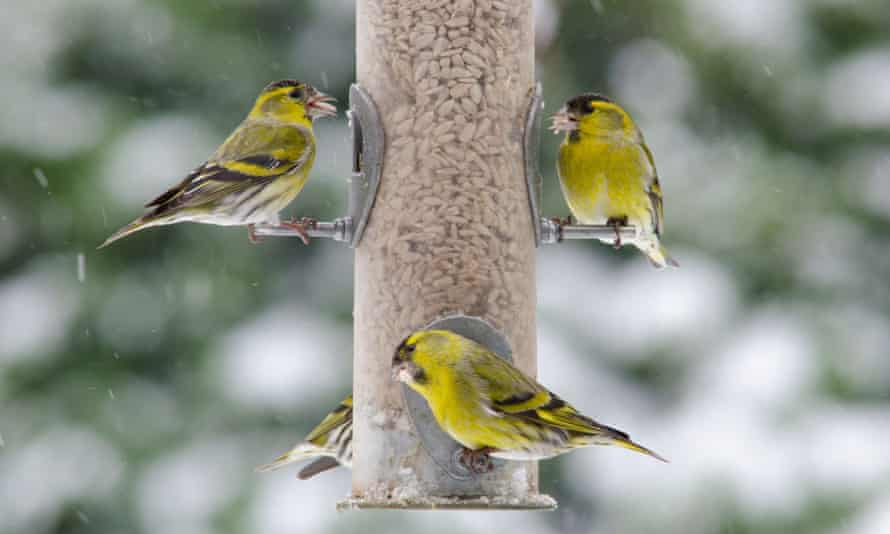
A garden feeder favourite, the siskin is a resident, but numbers are augmented by Scandinavian visitors in winter, improving your chances of attracting them to the bird table. Hardly larger than a blue tit and endlessly busy, this small finch brings a dash of bright colour with bold, streaky green-and-gold markings under a black crown. Half a century ago they were a rarity, but now they seem to be thriving, with a particular liking for small seeds – niger may attract them. Alongside a siskin you might see a lesser redpoll, which is only a fraction larger and wears a jaunty red beret of feathers. You might find them anywhere there is alder growing (always near water), but a good spot is RSPB Arthog Bog on the Mawddach estuary.
Goldcrest
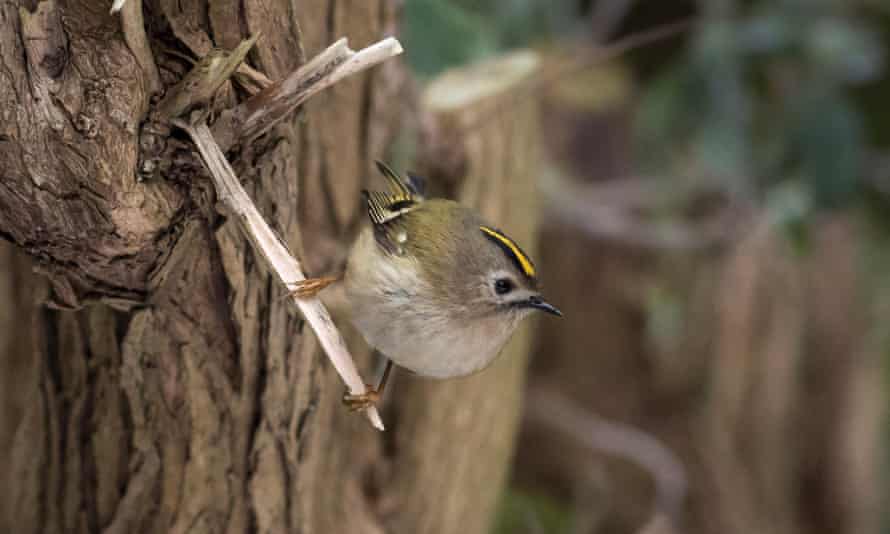
There is a resident population of these gorgeous tiny aviators, but winter sees large migrations from Scandinavia, sometimes thousands arriving at a time on the east coast. They feed on tiny insects, usually on pine trees, and need to keep up their fat reserves: a severe winter night can whittle away a fifth of their body weight, a potentially lethal loss when you only weigh the same as a teaspoon of salt. They do venture into gardens but rarely to a bird table. Maybe try chopped mealworms. This is a bird heard more often than seen, with its thin, high-pitched call tumbling from the tops of conifers. RSPB Broadwater Warren near Tunbridge Wells is a good bet for tracking some down.
Turnstone
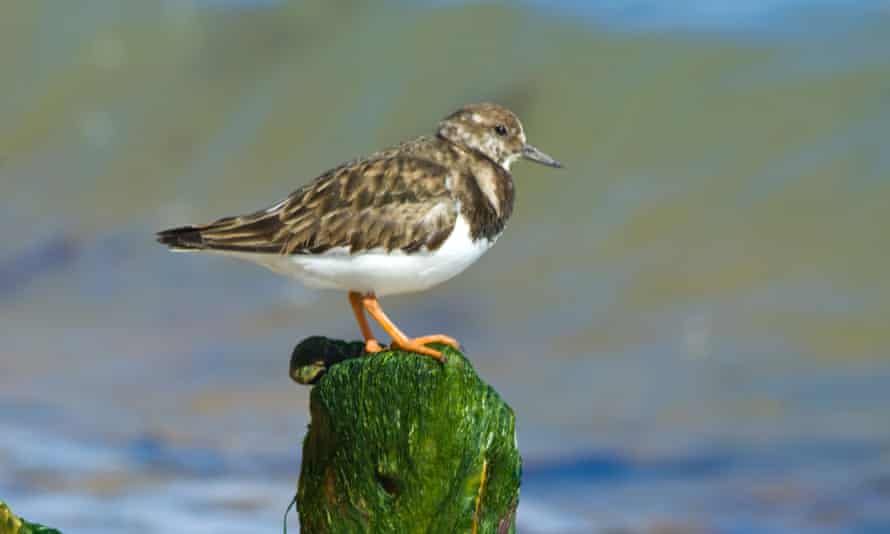
If you think beaches are for summer only, think again. Many bird species pass the winter on our shores, where they find plenty of food. Many turnstones arrive in early autumn from Canada and Greenland, spending their time fluttering across seaweed-covered rocks and sandy tidal flats where tasty morsels hide (other turnstones that breed in Europe visit the UK earlier in the year). Their close wader cousin, the purple sandpiper, may also be around: it’s a little less distinctive and smaller, sometimes arriving from Arctic islands like Svalbard. Check out the seabird bounty of Marwick Head reserve in Orkney or places on the east coast, north of the Humber.
Tundra peregrine
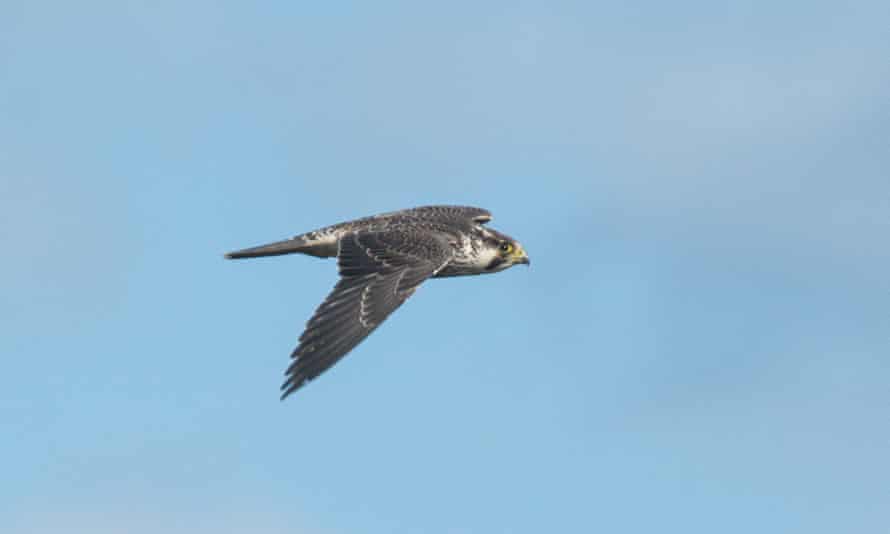
Britain’s coasts catch some rarities with fabulous names: what about a red-flanked bluetail or a red-eyed vireo? There are also species you might think far too colourful for our grey skies: bee-eaters and rollers, for example. In winter the Shetlands, Orkney and Fair Isle are the sanctuary of many a polar bird, such as the tundra peregrine. Paler-faced than our familiar bird, it nests in ice-free Greenland coasts and places such as Canada’s Northwest Territories, but enjoys a bit of summer warmth – North American birds sensibly head for Cuba and Latin America. For us in the UK, sightings are rare and usually only in the far north. Check local bird-watching tours on the various islands of the Orkneys.
Waxwing
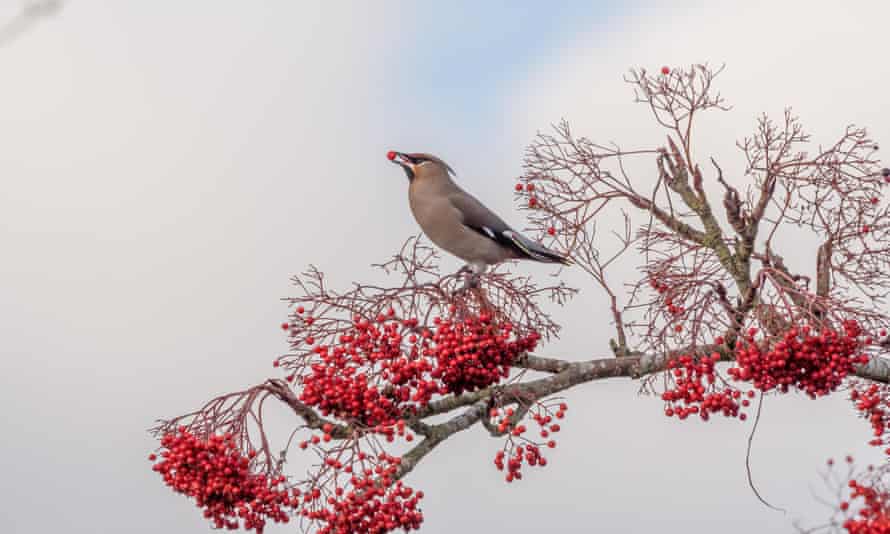
One of the great sights of winter is a horde of waxwings feasting on a frosted rowan tree’s scarlet berries. From a distance they look like undistinguished beige starlings, but seen through binoculars or a scope they leap into sartorial splendour, with flashes of black, white, yellow and red plumage. This autumn there is a bumper crop of rowanberries, so get ready: the first migrants arrive in late October, not leaving until March. They can be mercurial about where they go: Wales had big irruptions, as they are called, in 2004 and 2016, but some years there are far fewer around. The east coast is the most reliable: anywhere between Kent and the Moray Firth. Try St Cyrus reserve near Montrose. That stalwart of urban planting, the cotoneaster, is a big waxwing favourite, so they sometimes pitch up on roundabouts and in supermarket car parks. Soaked raisins on a bird table have also been known to attract them.
This article was amended on 6 November 2021. Minsmere is in Suffolk, not Essex as stated in an earlier version.
Among the birding guides used by Kevin Rushby is Europe’s Birds (GBP20, Princeton Press), available at the Guardian Bookshop for GBP17.40.